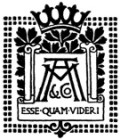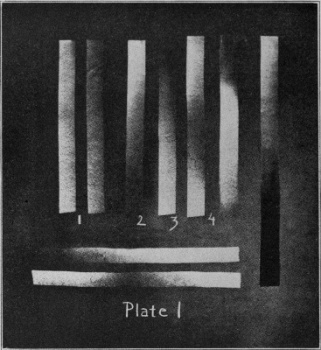Blackboard Drawing
A MONOGRAPH
BY
FREDERICK WHITNEY
OF THE
STATE NORMAL SCHOOL
SALEM, MASSACHUSETTS

SIXTH EDITION
PUBLISHED BY
Atkinson, Mentzer & Company
Boston New York Chicago Atlanta Dallas
Copyright, 1902-1903, by The Davis Press
All Rights Reserved
Foreword
This monograph is a reprint of a series of articles first published in thesecond volume of the magazine now known as The School Arts Book. Thearticles attracted wide attention on account of their timeliness and theirillustrations. The plates were made from photographs of actual work uponthe blackboard by Mr. Whitney, and are undoubtedly the most attractiveblackboard drawings ever published. The demand for these articles has beenso great that the original editions have been exhausted. They arerepublished in this form in the hope that they may influence yet morestrongly the increasing number of teachers who find the blackboardindispensable in teaching.
HENRY TURNER BAILEY
September, 1903
BLACKBOARD DRAWING
 one of the teachers who read “The School Arts Book” from month to monthdoubt in the least the value of drawing in our schools, and there is noneed of the slightest argument in its favor. Even in the lowest grades theteacher appreciates drawing as the natural expression of the thought andexperience of the child; a spontaneous activity, having its relation tolife, not a thing apart from life or an end in itself. Throughout thegrades the teacher should cultivate this spirit of freedom and interest,remembering that drawing is a language to be used as naturally and freelyas one written or spoken.
one of the teachers who read “The School Arts Book” from month to monthdoubt in the least the value of drawing in our schools, and there is noneed of the slightest argument in its favor. Even in the lowest grades theteacher appreciates drawing as the natural expression of the thought andexperience of the child; a spontaneous activity, having its relation tolife, not a thing apart from life or an end in itself. Throughout thegrades the teacher should cultivate this spirit of freedom and interest,remembering that drawing is a language to be used as naturally and freelyas one written or spoken.
Why should these suggestions not apply to the teacher as well as to thechild? Why should she not express herself, the interests of school lifeand of the pupil in the same free, natural way?
Upon entering a schoolroom the teacher finds the blackboards bare anddull. There is little in the line of decoration in the room and in orderto relieve this monotony she stencils a border, the picture of some greathero or well-known author, draws with colored chalk the inevitable flagscrossed at right angles or puts upon the board some design which possiblymay or perhaps may not have relation to the needs of the children, theirlife and activities, or the industries of the school.
When the drawing on the part of the child becomes the natural and freeexpression of the activities and interests of[Pg 6] every-day life, and theteacher uses this graphic language in the same manner, the blackboardswill be found constantly in use and upon them an ever changing series ofdrawings. These drawings should be illustrations of the geography,history, literature, nature work or any other line demanding their aid.Let them be drawings upon which a few moments of time are spent, a freesketch illustrating the object or topic as a means of making the subjectclearer in the minds of the pupils, not a picture produced by the laboreduse of chalk and eraser, to be kept upon the board indefinitely as a bitof decoration.
 ...
...